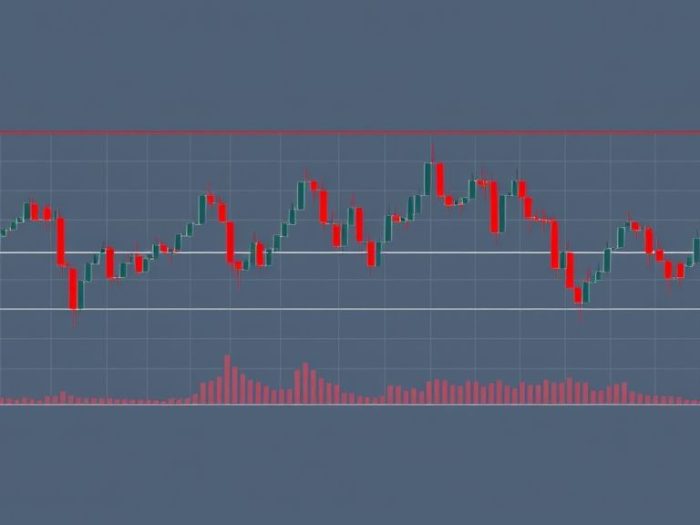Automating trading strategies can offer the potential for consistent returns, but it’s crucial
to approach it with realistic expectations and a solid understanding of the risks involved. While
guaranteeing consistent 1% daily returns is highly unlikely and unsustainable, this article explores
how to automate a Relative Strength Index (RSI) strategy, focusing on principles and considerations
for building a robust system.
Understanding the RSI Strategy
The Relative Strength Index (RSI) is a momentum indicator that measures the magnitude of recent
price changes to evaluate overbought or oversold conditions on a scale of 0 to 100.
- Oversold: RSI below 30.
- Overbought: RSI above 70.
A basic mean reversion strategy using RSI might involve:
- Buy Signal: Buy when the RSI is oversold.
- Sell Signal: Sell when the RSI is overbought.
Challenges of Automating for Consistent Returns
Achieving truly “consistent” daily returns is nearly impossible in any market. The forex market is
inherently volatile, and even well-designed strategies can experience losing streaks. Therefore, the
focus should be on building a robust system with a positive expectancy (more wins than losses over
the long term).
Steps to Automate an RSI Trading Strategy
1. Choose a Platform
Select a platform that allows for automated trading and provides API (Application Programming
Interface) access. Popular options include:
- MetaTrader 4/5
- TradingView (Pine Script alerts)
- Python libraries (e.g., ccxt, backtrader)
2. Define Entry and Exit Rules
Translate the RSI strategy into precise, unambiguous rules that a computer can understand.
-
Example:
- Entry: Buy when the RSI crosses below 30 and then crosses back above 30.
- Exit: Sell when the RSI crosses above 70 or after holding for a specific time.
3. Incorporate Additional Filters
Improve the strategy’s accuracy by adding filters:
- Trend Confirmation: Only take long trades in an uptrend (e.g., price above a moving average).
- Volatility Filter: Avoid trading during periods of high volatility.
- Time of Day: Trade only during specific hours of the day.
4. Backtest the Strategy
Test your strategy on historical data to evaluate its performance.
- Key Metrics: Analyze win rate, profit factor, drawdown, and average trade length.
- Optimization: Adjust parameters to improve performance, but avoid over-optimization (fitting the strategy too closely to past data).
5. Automate Execution
Use the platform’s API or scripting language to code your strategy and automate order placement.
6. Risk Management
Implement strict risk management rules:
- Position Sizing: Risk only a small percentage of your capital per trade (e.g., 1-2%).
- Stop-Loss Orders: Use stop-loss orders to limit potential losses.
7. Monitoring and Adjustment
Continuously monitor your bot’s performance and adjust the strategy as market conditions change.
Challenges of Automating for 1% Daily Returns
Consistently achieving a 1% daily return is highly challenging and often unrealistic. The forex
market is complex and unpredictable.
- Market Volatility: Volatility can cause unexpected price swings.
- Randomness: Forex prices have a degree of randomness.
- Changing Conditions: Market conditions constantly change, requiring frequent adjustments to your strategy.
Focus on Positive Expectancy
Instead of chasing unrealistic daily returns, focus on building a strategy with a positive
expectancy:
- Positive Expectancy: The average winning trade is larger than the average losing trade.
- Win Rate: The percentage of winning trades.
- Risk-to-Reward Ratio: The ratio of potential profit to potential loss.
Conclusion
Automating an RSI strategy is possible, but achieving consistent 1% daily returns is highly
unlikely. Focus on building a robust system with a positive expectancy, rigorous backtesting, and
strict risk management. Remember that forex trading involves significant risk, and losses are
possible.
Related Keywords
Automated forex trading, forex trading bots, RSI trading strategy, algorithmic trading, forex
automation, automated forex signals, forex trading system, forex trading platform, forex trading
robot, forex trading for beginners.
Frequently Asked Questions (FAQ)
1. What is the Relative Strength Index (RSI)?
The Relative Strength Index (RSI) is a momentum indicator that measures the magnitude
of recent price changes to evaluate overbought or oversold conditions.
2. What does an RSI value below 30 indicate?
An RSI value below 30 generally indicates that the asset is oversold, suggesting a
potential price reversal upwards.
3. What does an RSI value above 70 indicate?
An RSI value above 70 generally indicates that the asset is overbought, suggesting a
potential price reversal downwards.
4. Is it possible to guarantee consistent 1% daily returns in forex?
No, consistently achieving a 1% daily return is highly challenging and often
unrealistic due to the inherent volatility and unpredictability of the forex market.
5. What is the main goal when automating a trading strategy?
The main goal should be to build a robust system with a positive expectancy, meaning
the average winning trade is larger than the average losing trade over the long term.
6. What platforms can be used to automate trading strategies?
Platforms include MetaTrader 4/5, TradingView (using Pine Script alerts), and Python
libraries.
7. What are some examples of additional filters that can improve an RSI strategy?
Additional filters include trend confirmation (e.g., using moving averages),
volatility filters, and trading during specific hours of the day.
8. What is backtesting?
Backtesting is the process of testing a trading strategy on historical data to
evaluate its performance.
9. What are some key metrics to consider when backtesting?
Key metrics include win rate, profit factor, drawdown (maximum loss), and average
trade length.
10. What is the most important aspect of automating a trading strategy?
Strict risk management is paramount. Always use stop-loss orders and manage your
position size to protect your capital.



